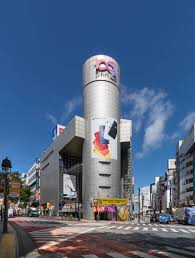
Introduction
As the landscape of retail continues to evolve, the role of malls in Canada is being redefined. Once considered the cornerstone of consumer shopping experiences, malls are now facing unprecedented challenges due to e-commerce growth, changing consumer preferences, and the impact of the COVID-19 pandemic. Understanding the future of malls is crucial for retailers, consumers, and urban planners alike, as these centers of commerce adapt to new realities and strive to remain relevant.
Current Trends in Mall Development
Recent reports indicate that Canadian malls are undergoing significant transformations. According to the Statistics Canada, retail sales at traditional physical stores, including malls, decreased by 3.2% in 2023, highlighting the pressure that brick-and-mortar establishments are under. In response, many malls are diversifying their offerings by incorporating entertainment, dining, and community spaces that appeal to a broader audience.
Malls such as the West Edmonton Mall and Yorkdale Shopping Centre are leading the way by integrating experiential retail, where shoppers can enjoy activities beyond just shopping. Facilities like indoor amusement parks, cinemas, and fine dining restaurants are now common features aimed at attracting visitors and increasing foot traffic.
Impact of E-commerce and Technology
The rise of online shopping is a significant factor in the decline of mall traffic. Consumers can now access a wide range of products from their homes, prompting malls to rethink their strategies. Many retailers are utilizing technology to bridge the gap between online and in-store shopping. Initiatives such as click-and-collect, where consumers can purchase online and retrieve items in-store, are becoming increasingly popular.
Community and Sustainability Focus
An emerging trend among Canadian malls is the focus on community involvement and sustainability. Malls are not only places to shop but also serve as community hubs. Events such as farmers’ markets, local artisan fairs, and cultural festivals are becoming staple events that enhance community engagement. Moreover, many malls are implementing eco-friendly practices, such as energy-efficient building designs and waste reduction initiatives, to attract environmentally conscious consumers.
Conclusion
The future of malls in Canada appears to be moving away from traditional retail models to more multifunctional community spaces that cater to a diverse array of consumer needs. As retail continues to evolve, it will be vital for malls to embrace innovation, technology, and sustainability to remain relevant in a highly competitive market. For consumers, this transformation represents an opportunity to enjoy a richer shopping experience, blending commerce, entertainment, and community engagement.




